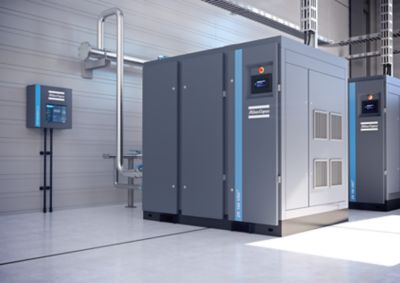How to remove oil and water from compressed air?
When air is compressed, it unavoidably contains a lot of tiny particles, such as dust and microorganisms. In addition, there is moisture in compressed air and, in many cases, traces of oil. There is simply no way around it.
The reason is that the ambient air (especially in compressor or utility rooms) also contains these contaminants, and an inlet filter is neither equipped nor intended to filter all of them out. In addition, some of these contaminants only enter the air system after the compression process.
Depending on the application and the level of contamination, this unclean air can wreak havoc on your production processes, equipment and end products. Fortunately, technologies and procedures are available to properly treat the air and avoid these problems, which can range from unpleasant and costly to disastrous.
To protect your system, you first have to understand the risks it faces and what can be done to counteract them.
Equipment to remove contaminants after the compression process
As noted above, it is not feasible to keep the various contaminants out of a compressed air system at the inlet. However, once it has been compressed, the air can then be effectively treated with different types of equipment.
Some compressors come with integrated filters, dryers and aftercoolers but below we will look at them as standalone devices.
Removing contaminants with filters
Filters should be installed at various points throughout the system. But it is important to note that not all filters target the same contaminants. A filter that is very effective in removing oil, for example, might not get rid of dust particles. That is why Atlas Copco offers a wide range of filters.
Some of them are designed to target a specific contaminant, while others can be used in specific situations, such as high-pressure environments. But purchasing the right filter is only the first step. Once it is installed, you have to make sure that the filters are well-maintained and replaced on a regular basis.
How to remove water from compressed air?
Moisture in compressed air can harm your system, equipment and products in two different ways – either by itself, for example through corrosion in the compressed air system or equipment, or by contributing to an environment that allows microorganisms to flourish. Fortunately, both of these problems can be addressed with the installation of dryers, aftercoolers and water separators.
Atlas Copco offers a variety of them, including its revolutionary
Moisture in compressed air can harm your system, equipment and products in two different ways – either by itself, for example through corrosion in the compressed air system or equipment, or by contributing to an environment that allows microorganisms to flourish. Fortunately, both of these problems can be addressed with the installation of dryers, aftercoolers and water separators.
Atlas Copco offers a variety of them, including its revolutionary Cerades™ desiccant dryer, which can effectively eliminate moisture in compressed air. While dryers can be installed in different places in the system, aftercoolers, which lower the temperature of the compressed air, should always be installed right after the compressor. They are usually paired with a water separator that drains the moisture from the treated air.
Finally, while installing these air treatment options is a great way to get rid of contaminants and ensure top-quality air, extend the service lives of your equipment and protect your production processes, you should still keep testing your compressed air periodically. A variety of tests is available that can tell you whether your air is as clean as you need it to be.
If you have questions about these tests, air contamination and the equipment needed to prevent it, you can always contact an Atlas Copco specialist who will be happy to help.
Preventing oil, dust, bacteria and moisture in compressed air systems
The various contaminants can’t do any harm if they are kept out of the air compressor system altogether, and that starts with choosing the right location for your compressor.
Ideally, you want to install it in an environment that is cool, dry and not very dusty. This alone will reduce the contamination of the inlet air – from dust particles to moisture.
In addition, make sure that you regularly check your system for air leaks and fix them if necessary. In addition to making your compressed air system more energy efficient, it also eliminates potential entry point for contaminants.
Finally, you can choose an oil-free compressor to ensure that no oil vapor or droplets are introduced into your air stream during the compression process. However, state-of-the-art oil-injected piston or screw compressors, like the latest models from Atlas Copco, already feature a very low oil content. That means the air is sufficient clean for many applications and filters can be used for those that require an even higher air quality.

